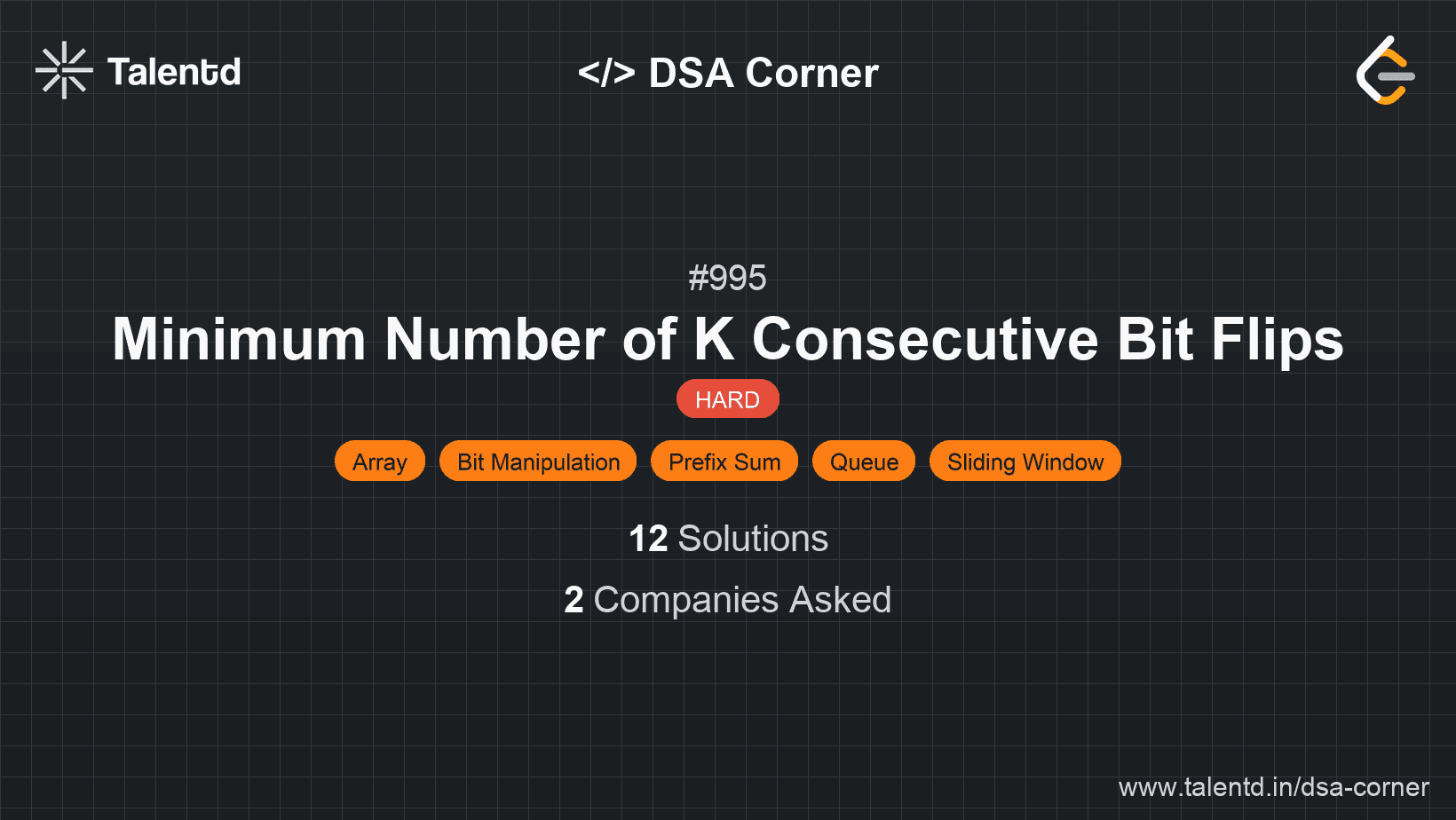
Sponsored
Sponsored
This approach uses a greedy strategy with the help of a queue to track the index of flips. The idea is to traverse through the array and only flip when necessary, using a queue to efficiently track start points of flips that affect the current position. When flipping, add the index to a queue. Dequeue any index that is outside the current consideration (i.e., more than 'k' steps away).
The time complexity is O(n), where n is the length of nums, because we make a single pass through the array, and the space complexity is O(n) due to the auxiliary array used to track flips.
1#include <stdbool.h>
2#include <stdio.h>
3#include <stdlib.h>
4
5int minKBitFlips(int* nums, int numsSize, int k) {
6 int flips = 0;
7 int flip_count = 0;
8 int* flip = (int*)calloc(numsSize, sizeof(int));
9 for (int i = 0; i < numsSize; ++i) {
10 if (i >= k) flip_count ^= flip[i - k];
11 if (nums[i] == flip_count % 2) {
12 if (i + k > numsSize) return -1;
13 flips++;
14 flip_count ^= 1;
15 flip[i] = 1;
16 }
17 }
18 free(flip);
19 return flips;
20}
21
22int main() {
23 int nums[] = {0, 0, 0, 1, 0, 1, 1, 0};
24 int k = 3;
25 printf("%d\n", minKBitFlips(nums, 8, k)); // Output: 3
26 return 0;
27}The code uses an auxiliary array `flip` to mark the positions where flips start. The array `flip` is needed to handle the state of whether a bit was flipped or not due to a previous operation. As we iterate through the binary array, we adjust our current state (taking into account the cumulative effect of flips up to `k` positions back) and determine if a flip is necessary. Flips are counted and active flips older than `k` moves are ignored to maintain efficiency.
This approach utilizes a sliding window technique with a flipping effect flag, which acts as a state tracker for ongoing flip operations. Using an in-place element flipping marker in the array enables this technique to minimize memory usage and avoid using additional data structures to track state.
Time complexity is O(n) because only single iteration and local modification are performed, while the space complexity is O(1), assisting state via in-place array manipulation.
1
This implementation uses a simple numeric transition state directly within the input array, marking flips by incrementing values past a threshold. Operation continuity checks thereby use `A[i]` as an in-place modified tracker, optimizing for process space considerations.